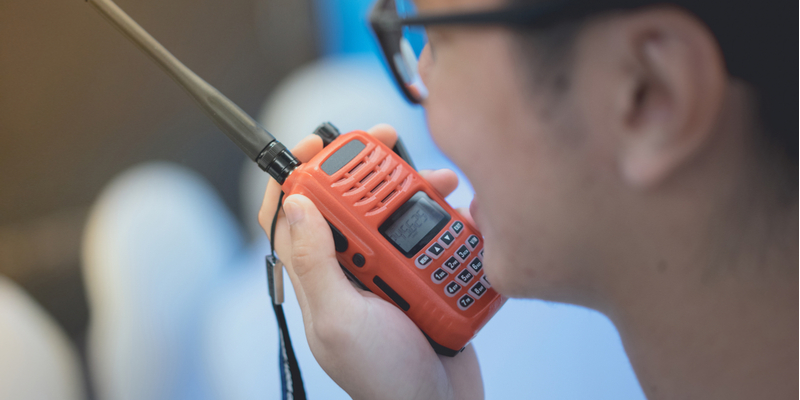Cellular enhancement systems and radio enhancement systems are similar but different. The key difference is that cellular enhancement systems are focused on improving cellular signal strength inside of a building, while radio enhancement systems improve radio signal strength for two-way radios. The latter is important for public safety because it ensures First Responders can use their two-way radios to communicate inside and out of the building during an emergency.
Radio Enhancement – DAS
Radio enhancement systems may seem less important than cellular enhancement systems, simply because more people use cell phones than two-way radios. Although, newer regulations and construction codes enforce the need for in-building radio enhancement systems to ensure First Responders have an open line of communication in an emergency.
A radio enhancement system contains three critical components:
A donor antenna system
Bi-Directional amplifier
Distributed antenna system
The donor antenna is usually placed on the very top of the building and communicates with the closest communications tower. This antenna is in charge of bringing a signal inside and outside of the building. The donor antenna is the most important part of the entire system, which is why we rely on Category 5 Hurricane-rated bracketing and R-56 Lightning Protection standards.
The bi-directional amplifier is in charge of receiving signals from the donor antenna and then amplifying the signal throughout the building. In addition, it takes in messages from the handheld devices used inside of the building and transmits them to the donor antenna.
The bi-directional amplifier works best when used in conjunction with a distributed antenna system – which is a network of in-building antennas.
The design of the system is important so that it works to provide consistent and well-balanced signals throughout the building.
Learn more about in-building radio enhancement systems
Cellular Enhancement Systems
Cellular enhancement systems are similar but involve more back-and-forth with cellular network providers. The system operates on essentially the same infrastructure that amplifies cell signals throughout a venue or building. Since it is similar, it is often added at the same time as a radio enhancement system.
It is very common for mobile phones to not get a signal underground or in large sky rise buildings. In-building cellular enhancement systems connect to the appropriate carrier and then directs the signal source through a bi-directional amplifier or a base transceiver station. The mobile carrier’s licensed radio frequency is transmitted and received via the signal. From there, the use of coaxial cable or optical fiber is used to transport the signal throughout the building.
Coverage antennas are carefully placed to provide the best coverage possible. The same design that works for one building may not work for another, that’s why customization is crucial to success.
Learn more about in-building cellular enhancement systems
Can You Have Both?
Yes! It is very common to install both a cellular enhancement system and a radio enhancement system at the same time. Both of these factors can be accommodated in the design and installation, allowing for greater communication across all platforms. Not all buildings require both. You can determine the needs of your building by conducting a signal strength pre-test – which we proudly offer for free.
Schedule Your Free Site Survey & Pre-testing of Signal Strength
We specialize in in-building enhancement systems, from the design to engineering, to installation. Contact us today to learn more and to find the right solution for your building.

